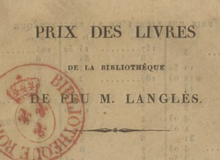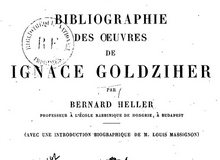Far from being by chance, the presence of oriental manuscripts in the Bibliothèque nationale, the heir of the Bibliothèque royale, reflects the determination of our predecessors to gain a direct knowledge of other systems of thought, literatures, and languages. The genesis of the collections in the BnF thus bears witness to various motivations which could be political or commercial, missionary or scientific.
The Council of Florence, which ended in 1445, still remains today a reference date on the relations between the Western and Arab worlds. Several Eastern delegations gave Eugene IV precious oriental manuscripts. The Egyptian Copts were particularly generous, and donated a large collection of Arabic manuscripts, to such an extent that when the Vatican Library was founded in 1475, it possessed one of the richest collections in Arabic in Christian Europe.
Inspired by the Renaissance, this “hunt for oriental manuscripts” started in Italy earlier than in France. At the time, books were seen as articles of great worth, and the wealthy put together large libraries. In the mid 15th century, Pope Nicolas V sent emissaries to seek out manuscripts of important works, not only in Italy, but in distant countries such as Great Britain and Poland. When it came to the Levant, in particular for religious reasons, the Papacy was far more attentive to the acquisition of the written heritage of eastern forms of Christianity. After the founding of several oriental printing houses in Rome, and the establishment of the Sacred Congregation De Propaganda Fide in 1622, the Papacy sought to act against the divisions between the Christian churches and affirm the primacy of the Bishop of Rome.
In France, it is known that six Arabic manuscripts figured in François I’s royal library in Blois in 1544. They bear witness to the lasting and passionate interest which was paid at an early date to the “Arabic language” and its books.
It was only in the 17th century that libraries and private collections started to become enriched with oriental manuscripts, especially Greek, Syriac, Coptic, Arabic, Persian and Turkish ones, as well as coins and ancient objects from the East. In the 1660s, the historian Jacques-Auguste de Thou added to the king’s library with a few oriental manuscripts, thanks to Harlay de Sancy, the French ambassador in Constantinople. Subsequently, France caught up Italy thanks to the encouraging and systematic interventions of Richelieu, Mazarin and above all Colbert. It was the last of these three who deserves praise for inciting and encouraging the first truly scientific explorations of the Orient, which were to enrich even more the King’s collections, and also those of the minister. Several so-called “archaeological” missions were launched, with the task of scientifically collecting manuscripts, coins and antiques. The main agents were the consuls of the “Échelles du Levant”, who in turn took on missionaries.
In 1669, the first official mission to the Orient was made by M. de Monceaux and M. Laisné. It led to the acquisition of manuscripts directly purchased in the Levant, while others, during the previous year (1668), came from donations from the Bibliothèque de Mazarin and the purchase of the collection of Gilbert Gaulmin (1585-1665), which included over 300 oriental manuscripts.
From 1671 to 1675, the German Dominican Johann-Michael Vansleb (1635-1679), whom Colbert had sent to the Levant, allowed the king’s library to acquire 630 oriental manuscripts (430 of them in Arabic), bought in Nicosia, Aleppo, Cairo and Smyrna. At the same time, Antoine Galland, who was part of the retinue of the ambassador, the Marquis de Nointel, continued his own acquisitions during his stay in Constantinople (1670-1675).
What the 17th and 18th centuries saw above all in manuscripts were the texts, in a quest for the lost scientific heritage of antiquity, transmitted from Greek to Arabic, as well as Christian scripture to feed the fires of religious controversy. Then, in the 19th century, there arose a greater interest in the aesthetic aspect of manuscripts, as can clearly be seen in the acquisition of prestigious collections, such as, in 1833, that of Asselin de Cherville (1772-1822) (1500 manuscripts), who had been a French consular agent in Egypt, or, in 1899, that of Charles Schefer (1820-1898), the founder of the School of Living Oriental Languages.
Paris became one of the main centres for oriental manuscripts and books, as can be seen in the public auctions of the libraries of J.-T. Rainaud (1867), Caussin de Perceval (1871), Félix de Saulcy (1872), Charles de Labarthe (1872) and Garcin de Tassy (1879). As for the Bibliothèque Nationale, after absorbing the libraries of monasteries —which, during the Revolution, added around 350 manuscripts (of which a good 300 came from the Abbey of Saint-Germain-des-Prés)— and manuscripts acquired during the Egyptian campaign, it set about publishing, thanks to Jules Taschereau and Joseph-Toussaint Reinaud, its catalogues of collections of oriental manuscripts, a process which is still continuing today with the digitisation of its catalogues.
Far from being by chance, the presence of oriental manuscripts in the Bibliothèque Nationale, the heir of the Bibliothèque Royale, reflects the determination of our predecessors to gain a direct knowledge of other systems of thought, literatures, and languages. The genesis of the collections in the BnF thus bears witness to various motivations which could be political or commercial, missionary or scientific.


_0.jpeg)



